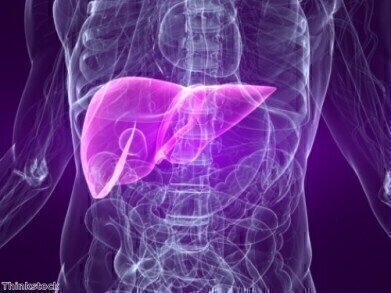-
 Liver cancer is difficult to diagnose in its early stages
Liver cancer is difficult to diagnose in its early stages
Microscopy & microtechniques
Test could identify early liver cancer
Sep 24 2013
A newly developed test could allow for liver cancer to be detected in its early stages. Researchers have developed a new test that allows cancerous cells in the liver to be identified at an earlier stage, which could lead to more successful treatment of the disease.
Liver cancer is hard to identify until the later stages, which often means that treatments are not able to lead to recovery. The main problem is that normal liver cells are almost identical in appearance to early stage liver cancer cells, meaning they are sometimes missed. In order to reduce the chance of not identifying the cancer cells, the new test turns the cells a red-brown colour, allowing them to be easily distinguishable from healthy cells.
Making an early diagnosis can lead to more effective treatments, according to Doctor Ravindra Kolhe, pathologist and medical director of the Georgia Esoteric, Molecular Labs at the Medical College of Georgia at Georgia Regents University. Definitive biopsies are also incredibly important as liver cancer often presents no symptoms in its early stages. By the time symptoms are recognised, such as weight loss or pain, it is often too late for effective treatment, even though at this time the cells are easily identifiable.
Researchers developed a probe that colours the cancerous cells in the liver in order to allow for easy identification as cancer. This probe works by identifying mir-21, microRNA, which is found only in the liver cancer cells. It then stains the mir-21, meaning that the cells become red-brown in colour, differentiating them from healthy cells.
The microRNA functions by helping to control the proteins that are made by RNA, meaning that it is a stronger part of the cell and can survive chemical interference. This means that it is still present after the liver cells have been introduced to the chemicals used throughout the biopsy process.
In order to test the effectiveness of the new probe, it was used on biopsies of ten livers that had early cancer cells present and ten healthy livers. In all cases where the liver contained early cancer cells, they showed up as red-brown in colour. The healthy tissue was not affected by the probe in any of the tests.
Digital Edition
Lab Asia Dec 2025
December 2025
Chromatography Articles- Cutting-edge sample preparation tools help laboratories to stay ahead of the curveMass Spectrometry & Spectroscopy Articles- Unlocking the complexity of metabolomics: Pushi...
View all digital editions
Events
Jan 21 2026 Tokyo, Japan
Jan 28 2026 Tokyo, Japan
Jan 29 2026 New Delhi, India
Feb 07 2026 Boston, MA, USA
Asia Pharma Expo/Asia Lab Expo
Feb 12 2026 Dhaka, Bangladesh
.jpg)
-(2).jpg)
















